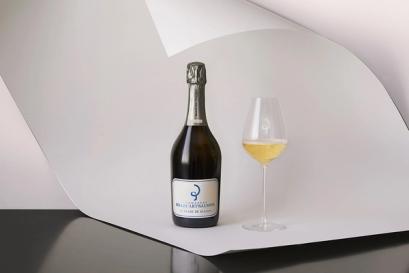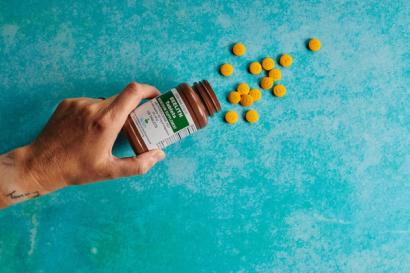

Why tawny is the best Port for Christmas
‘The obvious option is to simply go for vintage Port – but, these are grand, heavy, somewhat domineering wines’
- Words: Guy Woodward
There is an inescapable air of tradition tied to Port, a wine that has, after all, been making its way to these shores for more than 300 years. The British practically invented the stuff, fortifying the red wines of the Douro Valley via the addition of brandy, so that they might better survive the trip up river to Porto and thence around the Bay of Biscay.
Today, the winemaking has become slightly more refined (the brandy is added during – rather than after – the process, thereby halting fermentation and retaining a level of sweetness), and the UK remains Port’s largest market. And, Christmas, of course, is when tradition dictates that most of it is consumed.
Like settling down to listen to The King or playing Scrabble with your family, there’s a tendency to view drinking Port as a once-a-year event. But, Port is a far more deserving and versatile wine than that. There are, after all, several different types of it, each of them with their own innate style that lends itself to certain settings and pairings. As a consequence, finding the one best suited to your environment can be something of a minefield.
The obvious option at Christmas is to simply go for vintage Port, which remains the ultimate post-prandial. But, these are grand, heavy, somewhat domineering wines, whose stature tends to demand a certain reverence (and lead to a post-dinner slump). They also have a limited lifespan, and, once open, will become flat and hollow after three nights.
To me, the joy of Port comes in having a bottle on-the-go that you can sip contentedly over the festive season, whether with the Christmas pudding, the Stilton, or across the course of a few nights of Trivial Pursuit. And, the perfect partner for that purpose is tawny Port.
Though vintage Port develops its complex flavours largely through ageing in bottle, tawny Port does most of its ageing in oak casks, or ‘pipes’ as they’re known in the Douro. The prolonged oxidative nature of such ageing, whereby wines of different vintages are continually added to the blend, not only lends tawny ports a delicate, nutty freshness, but it also means they can withstand exposure to oxygen once opened. If kept in the fridge, a bottle can last a number of weeks. And, chilled is how you want to serve these wines, whose bright tang is the ideal pick-me-up with the assortment of snacks that tend to punctuate the festivities.
Tawnies come in all different age categories, from 10- to 50-year-olds, but I find 20-year-olds to have the optimum marriage of depth of flavour and lightness of touch. Graham’s 20-Year-Old is a fine example, embodying all that and more.
Graham’s sits alongside Dow’s, Warre’s and Cockburn’s as part of the enviable stable of Port houses built up by the Symington family, which has become the leading vineyard holder in the Douro since a 19-year-old Andrew James Symington moved there in 1882. As well as age-statement tawnies, Graham’s also makes single-harvest ones, from an individual vintage. Other houses with a more Portuguese heritage call such bottlings colheitas – ‘colheita’ being Portuguese for ‘harvest’. And, one house that specialises in the category is Quinta da Noval (itself now owned by French insurance group AXA and overseen by a Brit, the urbane Christian Seely).
Colheitas are aged for a minimum of seven years in wood before bottling, and Seely contends that such a regime means the wines can offer great quality at a fairly young stage of their life, unlike a vintage port (you could also argue that they’re rarer; Noval has made seven colheitas in 30 years, whereas it has declared a vintage in each of the last 10). On the evidence of the 2007 Quinta do Noval (bottled in 2021), I’d have to agree. Colheitas tend to be richer than age-statement tawnies, and this one features a wonderful melange of Christmas-cake fruit – nuts, raisins, dates – with a lifted note of apricot tart.
In recent years, white Port has become something of a hit when part of a refreshing summer cocktail, taken with tonic, ice and a sprig of mint. But, when taken solo, this incarnation can be enjoyed year-round – especially when it gets the tawny-ageing treatment.
Kopke is the oldest Port house still in existence, having been established in 1638. Its 10-Year-Old White Port is fermented in stainless-steel vats, before prolonged ageing in oak, just like a tawny. The result is a deeper, richer, more complex white port, with layers of spice and cedar that, when chilled, could work with everything from rich appetisers (mushroom vol-au-vents, maybe?) to a warming dessert (I’m thinking cinnamon-and-apple crumble). Or, yes, Stilton.
And, for an added bonus, while the palate showcases bruised-apple-and-pear tones, there’s a lingering grapefruit note on the finish that lends a bitter-sweet edge. Perfect, then, for trying in a cocktail with tonic and orange peel – as a result, that summery white-port and tonic suddenly becomes a winter negroni.
Want more drinks content? Read a connoisseur's guide to festive fizz…


